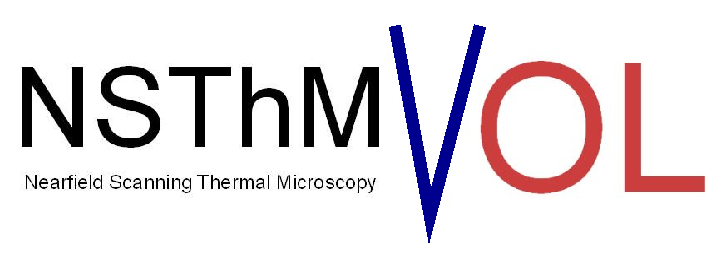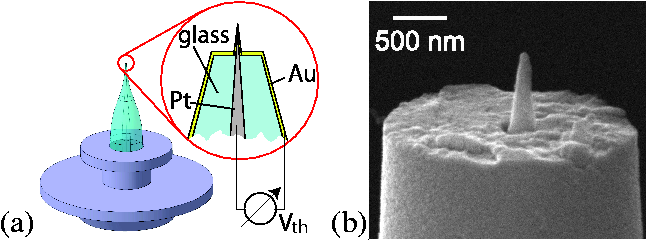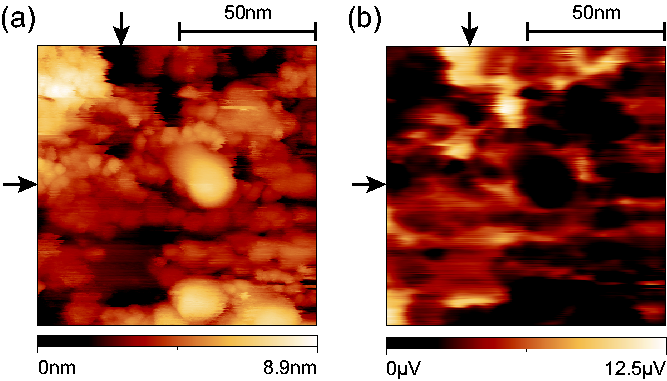

A dielectric body of finite temperature emits heat radiation associated with propagating modes of the electromagnetic field. Besides, there are thermally excited evanescent modes tied to its surface. These evanescent modes give rise to a highly efficient form of heat transfer, due to photon tunneling, when two bodies with different temperatures are brought closely together, such that their thermal near-fields overlap. Traces of this effect, which has been studied theoretically by Polder and van Hove in 1971, had already been observed experimentally by Hargreaves in 1969 with plane metallic surfaces kept a few micrometers apart, but the truly interesting regime of sub-micrometer distances could only be reached after the invention of scanning probe techniques.

The Oldenburg project on Near-Field Scanning Thermal Microscopy (NSThM) is an ongoing, joint experimental and theoretical effort which aims at systematically exploring the radiative near-field heat transfer between a sample surface and a small probe even down to nanometer distances. Following a proof of principle of the feasibility of near-field scanning thermal microscopy, the experimental set-up has been significantly refined, now employing miniature thermocouples capable of registering heat currents on the order of 10-7W at probe-sample distances from a few to some tens of nanometers. On the theoretical side, techniques are being developed for calculating the near-field radiative heat transfer between the sensor and a nanostructured surface. These works are providing new diagnostic tools for surface science.

This work is supported by the Deutsche Forschungsgemeinschaft under grant No. KI 438/8